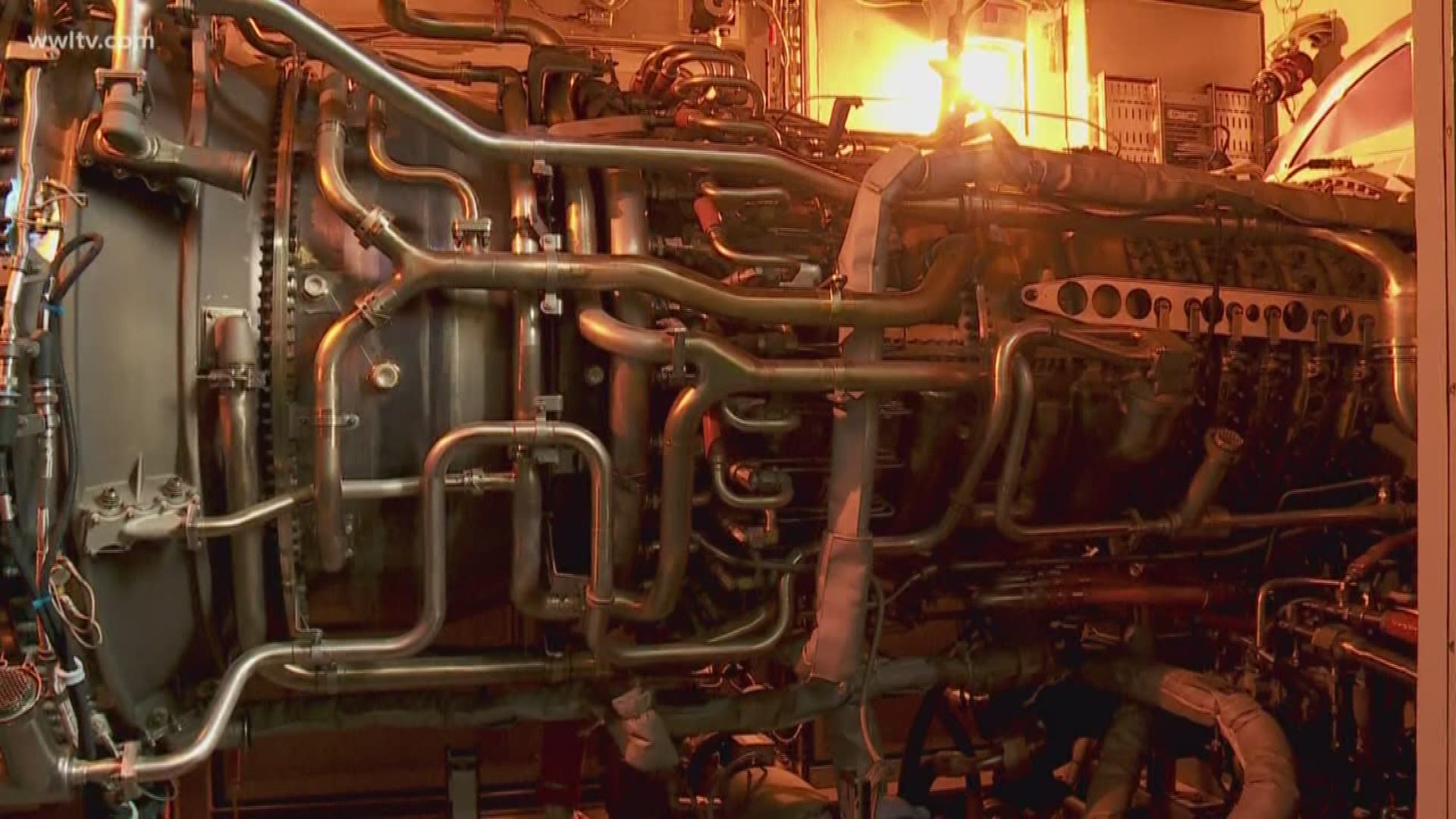The drop in water pressure in New Orleans early Saturday morning that led to a boil water advisory on the city’s East bank also exposed a weakness in the power generation capabilities of the Sewerage & Water Board: cold weather.
S&WB Executive Director Ghassan Korban said in a news conference Monday the power-generating turbine largely responsible for running the drinking water pumps will not work when temperatures drop below 45 degrees.
“It was designed really, as you know it was funded by FEMA, it was designed to function during the Hurricane season, the warmer season, and it did not have the safeguards, the specifications, to allow it to function all year round,” Korban said.
The U.S. Army Corps of Engineers built and paid for turbine 6 in 2014.
It is the newest of the agency’s power generating turbines and it produces a more modern type of power, 60Hz, that is used to run two of the pumps used to keep water pressure up in the pipes when usage drops.
A spokesman for the S&WB said the manufacturers specifications recommend not running the turbine in temperatures below 45 because it can cause ice crystals to form on the turbine blades, and that would have a “catastrophic impact.”
Just last week, Korban listed turbine 6 as “available” when making a presentation to the Board of Directors about the state of pumps and power operations. At the time of his remarks, turbine 6 was not online because the high temperature never climbed above 43 degrees in the metro area.
“Now, with that in mind, obviously that’s something we are going to pursue on our own to harden that turbine, allowing it to be used 365 days a year. But that’s a project that’s pending and it hasn’t been implemented,” Korban said.
City Councilmember for District A, Joe Giarrusso, emphasized the need for additional redundancy in ensuring the board has the power it needs to run all its pumps.
“You want to make sure that whether it's too hot or too cold, that we have power and power supply in all circumstances. So, what needs to be done is hardening across the system,” Giarrusso said.
The S&WB wasn’t the only agency with power that failed Saturday, a point not lost on Giarrusso. The agency had been relying on power from Entergy to run the drinking water pumps because turbine 6 couldn’t roll.
A truck hit a power pole in the Carrollton area, knocking out power to the neighborhood and the S&WB water treatment plant, the first domino to fall in a sequence of events that left residents and businesses boiling their water.
“To the extent that we need to do more and build substations or use more power on site or have better redundancies built in, then I think that really needs to be our first priority, along with the billing system, that needs to be addressed,” Giarrusso said.
The agency has plans to build a multi-million dollar Entergy substation dedicated to powering the S&WB system, but Korban said Monday that project was pushed back to 2019.
“We do have a footprint for a substation to be built, some work needs to be done because it’s occupied by an old, abandoned facility that obviously has to be demolished, and then that space needs to be recreated, allowing for the substation to be built,” he said.
It was one of a number of projects the board delayed, not just because of a shortage of funding, but because of its ability to get them all done.
“It’s still on an ‘imminent projects to be done,’ but that was going to happen regardless of the cash shortage quite honestly. Because the capacity and ability to do projects just naturally, organically pushed that project from 2018. So, if you look at the 2019 list, it is there,” he said.
The S&WB relies heavily on its ability to self-generate more antiquated, 25Hz power to run the majority of the city’s drainage system. Experts have recommended the S&WB move away from self-generated power, instead, relying more heavily on frequency changers that convert Entergy’s 60Hz power to the 25Hz power the agency needs to run many of its pumps.
But the reliability of lines that feed Entergy power into the S&WB system has long been a lynchpin in the system, as was the case on Saturday, which is why the S&WB revived plans to build a dedicated onsite.
Katie Moore can be reached at kmoore@wwltv.com.

